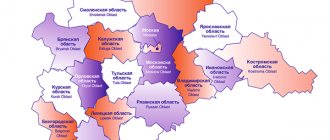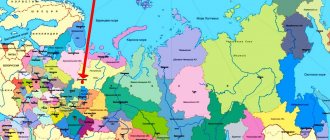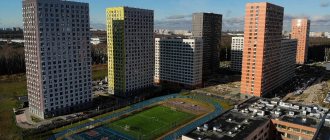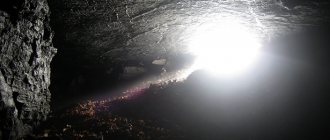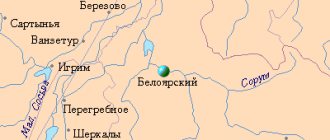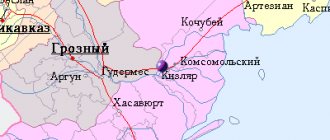Calendar for 2022
| January | ||||||
| Mon | W | Wed | Thu | Fri | Sat | Sun |
| February | ||||||
| Mon | W | Wed | Thu | Fri | Sat | Sun |
| March | ||||||
| Mon | W | Wed | Thu | Fri | Sat | Sun |
| April | ||||||
| Mon | W | Wed | Thu | Fri | Sat | Sun |
| May | ||||||
| Mon | W | Wed | Thu | Fri | Sat | Sun |
| 1 | ||||||
| 2 | 3 | 4 | 5 | 6 | 7 | 8 |
| 9 | 10 | 11 | 12 | 13 | 14 | 15 |
| 16 | 17 | 18 | 19 | 20 | 21 | 22 |
| 23 | 24 | 25 | 26 | 27 | 28 | 29 |
| 30 | 31 | |||||
| June | ||||||
| Mon | W | Wed | Thu | Fri | Sat | Sun |
| 1 | 2 | 3 | 4 | 5 | ||
| 6 | 7 | 8 | 9 | 10 | 11 | 12 |
| 13 | 14 | 15 | 16 | 17 | 18 | 19 |
| 20 | 21 | 22 | 23 | 24 | 25 | 26 |
| 27 | 28 | 29 | 30 | |||
| July | ||||||
| Mon | W | Wed | Thu | Fri | Sat | Sun |
| 1 | 2 | 3 | ||||
| 4 | 5 | 6 | 7 | 8 | 9 | 10 |
| 11 | 12 | 13 | 14 | 15 | 16 | 17 |
| 18 | 19 | 20 | 21 | 22 | 23 | 24 |
| 25 | 26 | 27 | 28 | 29 | 30 | 31 |
| August | ||||||
| Mon | W | Wed | Thu | Fri | Sat | Sun |
| 1 | 2 | 3 | 4 | 5 | 6 | 7 |
| 8 | 9 | 10 | 11 | 12 | 13 | 14 |
| 15 | 16 | 17 | 18 | 19 | 20 | 21 |
| 22 | 23 | 24 | 25 | 26 | 27 | 28 |
| 29 | 30 | 31 | ||||
| September | ||||||
| Mon | W | Wed | Thu | Fri | Sat | Sun |
| 1 | 2 | 3 | 4 | |||
| 5 | 6 | 7 | 8 | 9 | 10 | 11 |
| 12 | 13 | 14 | 15 | 16 | 17 | 18 |
| 19 | 20 | 21 | 22 | 23 | 24 | 25 |
| 26 | 27 | 28 | 29 | 30 | ||
| October | ||||||
| Mon | W | Wed | Thu | Fri | Sat | Sun |
| 1 | 2 | |||||
| 3 | 4 | 5 | 6 | 7 | 8 | 9 |
| 10 | 11 | 12 | 13 | 14 | 15 | 16 |
| 17 | 18 | 19 | 20 | 21 | 22 | 23 |
| 24 | 25 | 26 | 27 | 28 | 29 | 30 |
| 31 | ||||||
| November | ||||||
| Mon | W | Wed | Thu | Fri | Sat | Sun |
| 1 | 2 | 3 | 4 | 5 | 6 | |
| 7 | 8 | 9 | 10 | 11 | 12 | 13 |
| 14 | 15 | 16 | 17 | 18 | 19 | 20 |
| 21 | 22 | 23 | 24 | 25 | 26 | 27 |
| 28 | 29 | 30 | ||||
| December | ||||||
| Mon | W | Wed | Thu | Fri | Sat | Sun |
| 1 | 2 | 3 | 4 | |||
| 5 | 6 | 7 | 8 | 9 | 10 | 11 |
| 12 | 13 | 14 | 15 | 16 | 17 | 18 |
| 19 | 20 | 21 | 22 | 23 | 24 | 25 |
| 26 | 27 | 28 | 29 | 30 | ||
Designations in the calendar: X - holidays; X—weekends; X - reduced working day by 1 hour;
Khabarovsk
History of Khabarovsk
Until the mid-19th century, the lands on which Khabarovsk now stands were considered a neutral zone between Russia and the Great Qing Empire. Before the expedition of Gennady Ivanovich Nevelsky, everyone was convinced that navigation on the Amur was impossible. There was an opinion that this river does not flow into the sea, but is lost in the sands.
Khabarovsk in the 1890s
View of the Khabarovsk cliff in the 1900s
Plan of Khabarovsk, 1911
In 1858, representatives of the two countries signed an agreement. The left bank of the Amur became Russian, and the right bank of the river up to the mouth of the Ussuri went to China. In the same year, the Governor-General of Eastern Siberia, Count N.N. Muravyov, ordered the deployment of the 13th line battalion on the Amur. The soldiers, led by commander Yakov Vasilyevich Dyachenko, became the first builders of the city. They built the village of Khabarovo or, as they said then, Khabarovka, in which military personnel, recruited settlers and penal soldiers began to live.
The first urban plan for Khabarovka appeared in 1864. Three Sikhote-Alin spurs received the name “mountains” - Military, Middle and Artillery. Streets and neighborhoods arose on them, as well as soldier barracks, food warehouses, residential buildings and merchant shops.
A little later, civilian migrants from different parts of Siberia began to come to Khabarovka. They obtained furs and fished. In 1873, a primary school was opened in the village, and the very first market appeared here in 1877. According to the concluded agreement, goods made by workers of Chinese and English factories were sold duty-free in Khabarovka.
In 1880, the growing settlement became a city. After 13 years it was renamed Khabarovsk. The new city grew and quickly became a major cultural center. It published a newspaper, had a branch of the Russian Geographical Society, and even had its own museum. At the end of the 19th century, the railway from Khabarovsk reached Vladivostok. In 1916, a bridge was built across the Amur, and it became possible to travel by rail to Eastern Siberia.
Khabarovsk at the beginning of the 20th century
Military parade in Khabarovsk. 1936
After the fighting of the civil war, Soviet rule was established in the region. The city's population continued to increase, and in 1926 it was already 52 thousand people. With industrialization, new enterprises grew here, an airfield appeared, and several universities were opened.
After the end of the Great Patriotic War and the war with Japan, the city actively developed infrastructure. In 1956, the first trams began to run along Khabarovsk streets, and in 1975, trolleybuses.
Khabarovsk in the 80sInteresting Facts
- When Erofey Khabarov visited the Far East, he sent a letter to Moscow, where he wrote that the land of Dauria would be more profitable than Lena.
- In 1890, during a trip to Sakhalin, the writer Anton Pavlovich Chekhov stayed in the city. A year later, the future Russian Emperor Nicholas II visited here, who at that time was traveling around the world. In 1913, the famous Norwegian traveler Fridtjof Nansen made a stop in Khabarovsk.
- Several times Khabarovsk took part in a competition among federal subjects of the Russian Federation and received first place as the most comfortable city in the country.
- Khabarovsk is located next to China, so the city receives Chinese TV channels and can receive networks of cellular operators from China.
Geographical location and climate
Bridge over the Amur
The distance from the Russian capital to Khabarovsk by air is 6,100 km, and by rail – 8,533 km. The nearest settlement in China, the village of Fuyuan, is only 65 km from Khabarovsk.
The city was built on the lands of the Middle Amur Lowland, not far from the mouth of the Ussuri River. It stretches along the elevated bank of the Amur River and the Amur Channel for 33 km and has an area of 383 km².
Khabarovsk is located in a zone of temperate monsoon climate. The entire Far East is dominated by warm, humid summers and snowy, frosty winters. The average temperature in January is -20 °C, and in July +21.3 °C. The coldest winter here was in 2011, when the thermometer dropped to -41.1 °C. A year earlier, an absolute summer maximum of +36.7 °C was recorded in Khabarovsk.
In the Far Eastern city, the weather is sunny about three hundred days a year. On similar days, it is three times larger than Moscow and St. Petersburg. It is especially sunny in the region from late autumn to early spring, when the winter Siberian anticyclone dominates here. During the year, 684 mm of precipitation falls over the city. The rainiest months are July and August, while winter, on the contrary, is dry.
Khabarovsk in winter
Green areas and zoo
If your visit to Khabarovsk falls between May and October, it is worth taking a look at the local arboretum, which is located on Volochaevskaya Street, 71, almost in the city center. The green zone appeared here in 1896. It began with an experimental laboratory with a nursery and a forestry field. Time passed, and the territory grew into a large botanical garden with an area of 12 hectares.
Khabarovsk Arboretum
The Khabarovsk Arboretum is a popular natural attraction and a great place for walking. It is home to 386 species of plants brought from different parts of the planet. In the alleys there was a place for Amur wild grapes, Ussuri pear, Amur velvet, Manchurian walnut and Chinese lemongrass. You can get to the arboretum by trams No. 1, 2 and 6.
An excellent place to relax is the Dynamo city park, located north of Lenin Square, on Karl Marx Street, 62. The park area covers 31 hectares. It is very popular among Khabarovsk residents and tourists on summer weekends. Here you can have a nice walk and have a good time in one of the summer cafes. In the center of the green area there are three artificial ponds. One of them has a pedal boat rental station. In the evening, on the upper pond you can see a show of light and music fountains.
Dynamo Park
Arkady Gaidar Park
Parents with children prefer to come to the small children's park named after Arkady Gaidar, which is located opposite Dynamo Park, on Lev Tolstoy Street, 2. It has everything you need for a fun holiday - many attractions, playgrounds and a children's ice cream parlor.
Zoo in Khabarovsk
In the Northern district of the city lies the territory of the Khabarovsk Zoo, which bears the name of Vsevolod Sysoev. Khabarovsk residents call it the Priamursky Zoo. From the city bus station you can get here by regular bus No. 114. The zoo was created in 2002. It contains red, gray, polar and Canadian wolves, Himalayan bears, Amur tigers, Siberian chipmunks, squirrels, wild boars, arctic foxes, foxes, lynxes, reindeer and sika deer - almost 30 species of animals. Among the birds that live in the zoo are Far Eastern storks, Steller's and white-tailed eagles, crested honey buzzards, kestrels, golden eagles, long-tailed owls, several species of owls, pheasants and mallards.
It is noteworthy that all animals and birds are kept in spacious enclosures, and none of them were specifically removed from the natural environment. Animals came to the zoo in different ways. Most of them are wounded animals or young animals that died during the hunt.
From April to September the zoo is open from 10.00 to 19.00, from October to March - from 10.00 to 18.00. You can see the animals any day except Monday. Children under 5 years old are allowed into the zoo free of charge.
Cathedral
The main temple of the local diocese is the Transfiguration Cathedral. It stands on the river bank, in the city center. Its golden domes sparkle in the sun and are visible from afar. The cathedral rises 96 m above the steep bank and is considered the third Russian temple in height, second only to the Cathedral of Christ the Savior and St. Isaac's Cathedral.
The Khabarovsk Cathedral was built in 2001-2004 using charitable contributions from Khabarovsk residents and enterprises. The five-domed church can accommodate up to 3,000 believers at a time. The religious building attracts not only those who come to pray, but also tourists. People visit the Transfiguration Cathedral to listen to beautiful church singing and admire the rich interior decoration. The Cathedral is one of the most picturesque newly built buildings in the Far Eastern city. There are benches around it where you can relax and admire the surroundings.
Spaso-Preobrazhensky Cathedral of Khabarovsk
Museums
The oldest regional museum in Khabarovsk named after Nikolai Ivanovich Grodekov is called by the residents themselves the “Grodekovsky Museum”. It was founded in 1894 and today is housed in a building that was built in 1900 on Shevchenko Street, 11. By visiting here, you can learn about the distant past of the Amur region, the culture and traditions of indigenous peoples, the history of the development of the Amur region by Russia and the features of the Far Eastern nature.
The museum halls contain geographical maps, geological samples from all over the Far East, ethnographic exhibits, coins, medals, paper banknotes and ancient photographs. The gallery of the third building displays a huge skeleton of a fin whale. On the approaches to the building, artillery pieces of the 19th century are visible, and in front of the entrance there is a stone tombstone of the medieval commander Esukui, made in the form of a large turtle.
Khabarovsk Museum of Local Lore named after. N.I. Grodekova
For guests, the doors of the regional museum in Khabarovsk are open from 10.00 to 18.00, on all days except Monday. On Thursdays the museum welcomes guests from 13.00 to 21.00. Please note that the ticket office closes one hour earlier.
From Tuesday to Saturday there is a tourist information center at the Grodek Museum. This is a place where you can get advice about public transport, Khabarovsk museums and hotels. The tourist information center is open from 10.00 to 18.00.
Okladnikov Museum of Archeology
On Turgenev Street, 86, in a beautiful two-story mansion, there is the Okladnikov Museum of Archeology, which has the status of a branch of the regional museum. In front of the entrance to the building there are concrete copies of stone petroglyphs found near the Nanai village of Sikachi-Alyan. Inside the museum there are spectacular exhibitions that demonstrate what an archaeological site, a prehistoric cave, a taiga camp and a cave labyrinth look like.
In 2004, a separate museum of the history of the city was created in Khabarovsk. It is located in the Palace of Culture, on the street. Lenina, 85, not far from the city administration building. Museum exhibitions introduce visitors to the history of Khabarovsk from its founding, as well as the events that took place in the Far East during the Civil and Great Patriotic Wars. The museum doors are open every day except Monday, from 10.00 to 18.00.
Museum of the History of the Far Eastern Military District
Of great interest are the collections of the military museum of the Far Eastern Military District, which is located on Shevchenko Street, 20. Museum exhibits tell about the history of the Soviet Army in the Far East, and in the open area you can see samples of weapons and military equipment from different years. The military museum is open on weekends. Children are allowed here for free.
In the Krasnoflotsky district of Khabarovsk, there is an open-air museum of the Amur Bridge, created on the initiative of the Far Eastern Railway. Museum visitors can take a walk along the old bridge structure, built before the revolution, and also see rare steam locomotives and carriages. Other museum exhibits are housed in a wooden building that reproduces the first building of the Khabarovsk railway station.
Art lovers should pay attention to the Far Eastern Art Museum. It is located on Shevchenko Street, 7, and presents rich collections of Russian and Western European art, the art of the ancient world, the peoples of the East and the indigenous peoples of the North. The museum was created in 1934 on the basis of proceeds from the Tretyakov Gallery, the Historical Museum and the Pushkin Museum of Fine Arts. The Khabarovsk Art Museum is open on all days except Monday, from 10.00 to 18.00.
Since 2005, the “Fish of the Amur” aquarium museum has been operating in the city. You can see 125 species of Amur fish there. The aquarium museum is located on Amursky Boulevard, 13, and is open to visitors from Wednesday to Sunday from 11.00 to 17.00.
Panorama of Khabarovsk
What to see in the vicinity of Khabarovsk
Many travelers do not limit themselves only to city attractions, but take interesting routes in the vicinity of Khabarovsk. It should be borne in mind that in spring and summer, everyone who wants to travel outside the city needs to protect themselves from the encephalitis tick. To do this, they do a preliminary vaccination, and use repellents during the trip.
Sikhote-Alin Nature Reserve
Excursions to the Utes wild animal rehabilitation center, which is located in the western foothills of Sikhote-Alin, a two-hour drive from the city, are popular among tourists. The rehabilitation center is maintained by a non-profit organization located in the village of Kutuzovka. Here they treat tigers, bears, lynxes, deer, wild boars, roe deer, raccoons and foxes - all taiga animals that find it difficult to survive without human help. Visitors are offered excursions along an ecological trail equipped with observation platforms.
Trips to the Nanai village of Sikachi-Alyan, located on the banks of the Amur, are very popular. They get there by regular bus No. 205, which runs from the Khabarovsk bus station. Since 2005, a branch of the Grodekovsky Museum has been organized in the village, where you can get acquainted with unique petroglyphs, as well as the customs and culture of the Nanai people.
Petroglyphs of Sikachi-Alyan
The museum exhibits stone tools from the 11th century BC, a model of a Neolithic settlement, a Nanai bride’s costume, wooden utensils, clothes made of fish skin and equipment for hunting and fishing. The museum in Sikachi-Alyan is located on Oktyabrskaya Street, 1A. It is open every day except Monday, from 10.00 to 18.00.
Bolshekhehtsirsky Reserve
From Khabarovsk, tourists go to the Bolshekhekhekhtsirsky nature reserve, which is located 20 km from the city, in the spurs of the Bolshoi Khekhtsir ridge. A trip to the reserve allows you to get acquainted with many endemic plants and animals, as well as visit beautiful taiga landscapes. The protected area was established in 1963. Today it covers 45 thousand hectares of natural land, 12 thousand of which are under special protection. The thorny plants and vines growing here give the local forests the appearance of an impenetrable tropical jungle. Populations of rare species of animals – the Amur tiger and the Himalayan bear – have been preserved within the reserve. On the territory you can also find wapiti, musk deer, harza, lynx, weasel and sable.
Regular bus No. 107 runs from Khabarovsk to the reserve. It leaves once every 30 minutes and takes one and a half hours to the village of Bychikha, where the administration of the nature conservation area is located at house 8 on Yubileinaya Street.
Transport
Trolleybus in Khabarovsk
There are trams, trolleybuses, buses and minibuses running around Khabarovsk. The city is quite large, so the length of public transport routes exceeds 500 km. There are no plans to build a metro here due to the large number of underground rivers and hilly terrain.
There is a passenger river port in Khabarovsk. It is located at the beginning of Ussuriysky Boulevard, on Shevchenko Street, 1. Navigation lasts several months, from May to October. Previously, there was a cruise service on the river, but now there are no such ships. Down the Amur River, to Nikolaevsk-on-Amur, Komsomolsk-on-Amur and Amursk, passengers are transported on Meteors. Up the Tunguska River - on the Zarya motor ships. The Polesie motor ships go to the Chinese village of Fuyuan, and you can get to the opposite, left bank of the Amur on the Moskva and Moskvich motor ships.
Souvenirs
When leaving Khabarovsk, tourists take away various souvenirs as souvenirs of the Far Eastern city - magnets, keychains, plates and notebooks with views of Khabarovsk. Very popular taiga souvenirs are pine nuts, lingonberries, cranberries, ferns, lemongrass, eleutherococcus and other medicinal plants growing in the Far East. Many people like crafts made from deer antlers, leather, wood, stones and fangs of wild animals, as well as copies of petroglyphs from the Nanai village of Sikachi-Alyan.
TSUM Khabarovsk
Souvenir products are sold in the Central Department Store, large shopping centers, a bookstore near Lenin Square, in the local history museum and specialized souvenir shops. Excellent purchases can be made in the “Secrets of Craft” store and the Art Salon, which are located on Muravyov-Amursky Street.
Khabarovsk is close to Korea and they sell a lot of Korean products here. Most tourists try to buy Far Eastern delicacies in the city - red fish and caviar. Fresh and smoked seafood can be found in any supermarket in the city. Maxim brand coffee, Ussuri balsams and confectionery products from the local Sputnik factory are in great demand.
Where to stay
To accommodate tourists in Khabarovsk, there are about 40 hotels offering different levels of service. These are motels, mini-hotels, apartments, guest houses and large hotel complexes. Those who want to rent inexpensive accommodation should pay attention to budget hostels. Accommodation in them costs about 500-800 rubles per night.
Assumption Cathedral on Komsomolskaya SquareStele "City of Military Glory"
Some travelers prefer to rent an apartment in the desired area of Khabarovsk from private owners. There are plenty of offers for daily apartment rentals at any time of the year. Many Khabarovsk residents rent out rooms, hotels, one- to three-room apartments and housing that has more than six rooms. The rental price starts from 1,700 rubles.
Booking.com
How to get there
There are four airfields located around Khabarovsk. Tourists are received by two of them: “Khabarovsk-Novy” and “Khabarovsk-MVL”. Khabarovsk-Novy International Airport is one of the largest in the Far East. It serves flights from the cities of the Khabarovsk Territory, from the Far East, from other places in the country and from abroad. You can fly to Khabarovsk both with and without transfers. Every day, planes fly from Moscow Sheremetyevo Airport to Khabarovsk at 21.30. The flight lasts 8 hours and ends in Khabarovsk at 12.30 local time. Flights with one transfer take about 12 hours, and with two – 17 hours.
Khabarovsk-Novy Airport
Khabarovsk-Novy Airport is 10 km away from the city. Travelers get to Khabarovsk by bus No. 35, trolleybus No. 1 or taxi. By car the journey takes 10-15 minutes, and by public transport – 40-50 minutes.
Khabarovsk-MVL Airport serves local airlines. They are used when you need to fly to remote places where land or river transport does not go. This airport is located 1 km closer to the city than Khabarovsk-Novy. They are separated by one public transport stop.
Khabarovsk railway station is located on Leningradskaya street, 58. All trains that run along the Trans-Siberian Railway stop at the Khabarovsk-1 station. Every day one train passes through the city to the city of Nakhodka and 4-5 trains going to Vladivostok. The road to Khabarovsk from Moscow takes 5.5-6 days, from Irkutsk – 2.5 days, and from Chita – 1.5 days.
People come to Khabarovsk by intercity buses from the cities of the Jewish Autonomous Region and Primorye: Birobidzhan, Komsomolsk-on-Amur, Amursk, Sovetskaya Gavan, Bikin, Vyazemsky, Vladivostok, Lesozavodsk, Ussuriysk, Dalnegorsk and Arsenyev. Khabarovsk bus station is located on Voronezhskaya street, 19.
Calendar of low prices for air tickets to Khabarovsk
Holiday calendar, dates and events for every day of the year
All state and professional holidays of Russia, including significant World and International holidays, and other equally interesting holidays, dates and events of the year... Holiday calendar for every day; Russian production calendar with holidays.
• What holiday is today and tomorrow, dates and events...
How federal districts and their centers have changed
The center of the federal district is a settlement in which the plenipotentiary representative of the head of state, his apparatus, and various coordinating bodies are located. In addition, departments of federal ministries and departments may be created in the capitals of federal districts. Decisions on their establishment are made by government agencies themselves.
Federal districts were established on May 13, 2000 by decree of Putin. Initially, seven federal districts were formed with centers in large cities: Central Federal District (center - Moscow), North-Western (St. Petersburg), North Caucasus (Rostov-on-Don), Volga (Nizhny Novgorod), Ural (Ekaterinburg) ), Siberian (Novosibirsk) and Far Eastern (Khabarovsk).
On June 21, 2000, the North Caucasus District was renamed the Southern District, while the center of the district remained in Rostov-on-Don. On January 19, 2010, a separate North Caucasus Federal District with its center in Pyatigorsk, Stavropol Territory, was separated from the Southern District.
On March 21, 2014, in connection with the formation of new subjects of the Federation - the Republic of Crimea and the federal city of Sevastopol - the Crimean Federal District was created with its center in Simferopol. On July 28, 2016, by decree of the head of state, the Crimean District was liquidated, and the constituent entities of the Russian Federation previously included in it were transferred to the Southern Federal District. On November 3, 2022, Buryatia and the Trans-Baikal Territory were withdrawn from the Siberian District and included in the Far Eastern Region.
Currently, there are eight federal districts in Russia. Almost all of their centers are located in the capitals of the constituent entities of the Federation or cities of federal significance. The exception is the North Caucasus Federal District with its capital in Pyatigorsk.
Church calendar for every day
The church calendar is a time counting system used by the Orthodox Church to determine the sequence of church holidays and fasts in the annual cycle, as well as the corresponding services. Also the name of printed publications of various types, containing (in addition to general calendar functionality) elements of the monthly calendar and other materials of a liturgical and menological nature adapted to a specific year. The Church calendar contains two annual circles of events... Church calendar
Medicine
There are 36 municipal healthcare institutions in the city:
- clinics;
- hospitals;
- maternity;
- diagnostic center;
- ambulance station;
- emergency service;
- children's home;
- sanatoriums.
In addition, a network of medical institutions has been developed to provide high-tech assistance to the population. There are family clinics and traditional Chinese medicine centers.
Medical care for Khabarovsk residents is provided at a high level, so the birth rate in the city is increasing and natural population decline is decreasing.
As you can see, the quality of life in the Far Eastern capital is at the proper level. In the city on the banks of the Amur there are many places for good rest, study and work. Housing is expensive, but recently a number of government programs have been implemented here, and real estate prices are gradually beginning to recover.
Russian folk calendar for every day
Season: Winter - December, January, February.
Season: Spring - March, April, May.
Time of year: Summer - June, July, August.
Season: Autumn - September, October, November.
